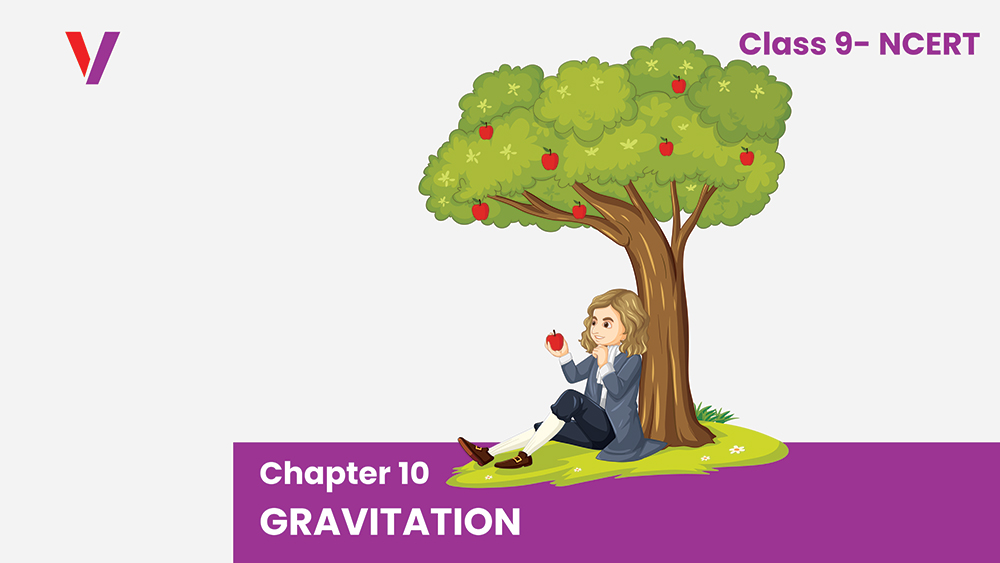Chapter 11: Human Eye and Colourful World
Question 1The human eye can focus objects at different distances by adjusting the focal length of the eye lens. This is due to(a) presbyopia(b) accommodation(c) near – sightedness(d) far – sightednessAnswer:(b) Accommodation Question 2The human eye forms…
Chapter 9: Force and Laws of Motion
In-Text Questions Solved NCERT Textbook for Class 9 Science – Page 118Question 1. Which of the following has more inertia:(a) a rubber ball and a stone of the same size?(b) a bicycle and a train?(c) a five-rupees…
Chapter 10: Gravitation
In – Text Questions Solved NCERT Textbook for Class 9 Science – Page 141Questin 1. Why is it difficult to hold a school bag having a strap made of a thin and strong string?Answer: The force exerted by…
Chapter 10: Light Reflection and Refraction
Question 1Which one of the following materials cannot be used to make a lens ?(a) Water(b) Glass(c) Plastic(d) ClayAnswer:(d) Clay Question 2The image formed by a concave mirror is observed to be virtual, erect and larger than…
Chapter 14: Biomolecules
14.1. Glucose or sucrose are soluble in water but cyclohexane and benzene (simple six membred ring compounds) are insoluble in water Explain.Ans: The .solubility of a solute in a given solvent follows the rule ‘ Like dissolves like’.Glucose…
Chapter 13: Amines
13.1. Classify the following amines as primary, secondary and tertiary:Ans: (i) 1° (ii) -3° (iii) 1° (iv) 2° 13.2. Write the structures of different isomeric amines corresponding to the molecular formula, C4H11N.(i) Write the IUPAC names of all…
Chapter 12: Aldehydes Ketones and Carboxylic Acids
12.1. Write the structures of the following compounds:(i) α-Methoxypropionaldehyde(ii) 3-Hydroxybutanal(iii) 2-Hydroxycyclopentane carbaldehyde(iv) 4-OxopentanaI(v) Di-sec.butylketone(vi) 4-fluoroaeetophenoneAns: 12.2. Write the structures of the products of the following reactions:Ans: 12.3. Arrange the following compounds in increasing order of their boiling…
Chapter 11: Alcohols Phenols and Ether
11.1. Classify the following as primary, secondary and tertiary alcohols. Ans: Primary alcohols: (i), (ii), (iii)Secondary alcohols: (iv), (v)Tertiary alcohols: (vi) 11.2. Identify aliylic alcohols in the above examples.Ans: (ii) and (iv) i.e. H2C=CH – CH2OH and 11.3. Name…
Chapter 10: Haloalkanes and Haloarenes
10.1 Write structures of the following compounds:(i) 2-Chloro-3-methylpentane(ii) 1-Chloro-4-ethylcydohexane(iii) 4-tert. Butyl-3-iodoheptane(iv) 1,4-Dibromobut-2-ene(v) 1-Bromo-4-sec. butyl-2-methylbenzene.Ans: 10.2. Why is sulphuric acid not used during the reaction of alcohols with KI?Ans: KI is expected to give HI on reacting with H2SO4 which…
Chapter 9: Coordination Compounds
9.1. Write the formulas for the following coordination compounds:(i)Tetraamminediaquacobalt(IlI) chloride(ii)Potassium tetracyanidonickelate(II)(iii)Tris(ethanp-1,2-diamine) chromium(III) chloride(iv)Amminebromidochloridonitrito-N- platinatc(II)(v)Dichloridobis(ethane-l ,2-diamine) platinum (IV) nitrate(vi)Iron(III)hexacyanidoferrate(II)Ans: (i) [CO(NH3)4(H2O)2]Cl3.(ii)K2[Ni(CN)4](iii)[Cr(en)3]Cl3(iv)[Pt (NH3) Br Cl (N02)]–(v)[PtCl2(en)2](N03)2(vi)Fe4[Fe(CN)6]3 9.2. Write IUPAC names of following co-ordination compounds :(a) [CO(NH3)6]Cl3(b) [CO(NH3)Cl]Cl2(C) K3[Fe(CN)6](d) [K3[Fe(C2O4)3](e) K2[PdCl4](f)…

Error: Contact form not found.



